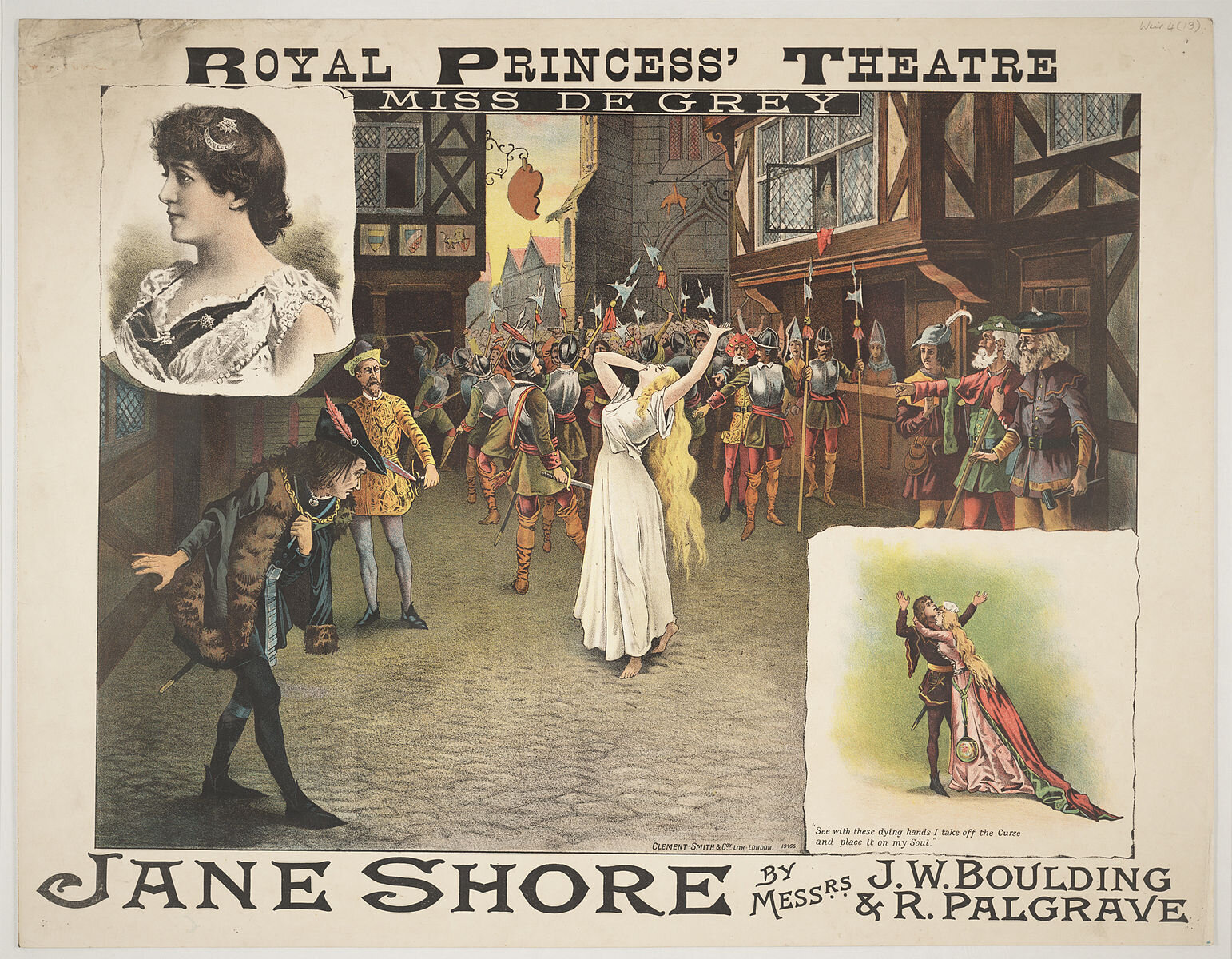Museum volunteer Charlotte Elliston tells us about the women’s history she’s discovered in her local area, during her daily walks under lockdown…
Due to the current Covid-19 pandemic, I, like the rest of the UK, have found myself unable to enjoy my usual recreational activities and am limited to an hour walk a day. I’ve been inspired by Charlotte Tomlinson’s amazing heritage walking trail for the museum which you should definitely add to your walks if you live near Whitechapel, Bow or Barking. We’ve posted snippets of these stories under the #WomensHistoryonMyWalk on the Museum’s twitter account so take a look for these and other stories sent in by our friends and followers too. I have found so much interesting information, I’ve created two blog posts of the sites I’ve found on my walk! The other has a Spitalfields focus and can be found here.
1. I live in the far south-west corner of Hackney borough, in-between Shoreditch and Hoxton, so this is where I started my research. In the past it was suggested that the name Shoreditch itself stems from Elizabeth “Jane” Shore, born in around 1445 as Elizabeth Lambert into a merchant family. Married by her family to goldsmith and banker William Shore who was 15 years older than her, she petitioned to have the marriage annulled in 1476 on the grounds that her husband was impotent and she wanted to have children. After the separation, she reputedly began a relationship with King Edward IV, as well as with his stepson Thomas Grey, the Marquis of Dorset, and William, Baron Hastings. When Richard III took the throne after Edward’s death, Elizabeth was sent to Ludgate Prison for her links with those who represented the previous court.
Theatre poster for ‘Jane Shore’ at Royal Princess' Theatre, Edinburgh from 1885 - a later play depicting her life.
A legend continues Elizabeth’s story to say that after her release, she roamed the streets around Hoxton and Spitalfields; old and penniless she eventually succumbed to the elements and was found dead in a ditch. This, fortunately, is fabrication and Elizabeth was thought to have remarried and lived to a comfortable old age. However, there were until fairly recently, remnants of the legend in both street names and pubs named after her, and there is apparently still a mural in Haggerston library about the legend (I’ll have to go and see when the library reopens). I went to look for the Jane Shore pub, built in 1852 at 103 Shoreditch High Street, and but it has now sadly been demolished and the Ace Hotel stands on the site.
2. I was more successful in finding still standing, the building which housed the Shoreditch Technical Institute on Pitfield Street which holds the second story I went on search of. The Institute opened in 1899 and was run by the Technical Education Board of the London County Council. It included a Domestic Economy School for Girls, as well as Trade Schools for both boys and girls. I found out that Verena Holmes studied here around the turn of the 20th century. Verena Holmes had wanted to become an engineer since childhood, and as a young woman she worked building wooden propellers at the Integral Propeller Company, Hendon, alongside taking night classes at the Shoreditch Technical Institute. She went on to study at Loughborough Engineering College in 1922 for her BSc(Eng) degree.
Portrait of Verena Holmes published in the announcement of her presidency of the Women's Engineering Society in their journal, The Woman Engineer
During her career she developed various new pieces of engineering equipment, including the Holmes and Wingfield pneumo-thorax apparatus for treating patients with tuberculosis, a surgeon's headlamp, a poppet valve for steam locomotives, and rotary valves for internal combustion engines.
She was one of the founding members of the Women’s Engineering Society and founded the engineering firm of Holmes and Leather in 1946, which employed only women. Using a design created by Holmes, this firm created the first practical safety guillotine for paper, making it suitable for introduction into schools.
The Shoreditch Technical Institute was renamed the Technical College for the Furnishing Trades in 1951, with a new emphasis on design as well as craftsmanship and aimed at post-18 and adult education. The buildings in which the Institute resided are now private residences.
3. A great way to find out about local history sites in your borough is via the council’s listings of blue and brown plaques. I found out that a large area of Shoreditch was covered by Holywell Priory, formally known as the Priory of St John the Baptist, situated within the area now bounded by Batemans Row, Shoreditch High Street, Holywell Lane, and Curtain Road. It was established in the 12th century, and housed around 10-20 women, lay women (those who hadn’t taken religious orders) as well as nuns. At the time the priory was in operation, women would have been expected to marry as soon as they were old enough and for many, the only alternative to marriage would have been to join a religious community as a nun.
Plaque marking part of the site of Holywell Priory at 98 Curtain Rd (c) Charlotte Elliston
A story is recorded about one of the Prioresses of Holywell, Elizabeth Montacute (also sometimes spelled Montagu/e) who served in that office from 1340-1357. In 1357 it was reported that a gang of men broke into the priory and managed to capture and abduct Joan Coggeshall, who was residing at the priory under care of Elizabeth who had pledged to restore her to her guardian unmarried. Apparently, the men took Joan away to be ‘married’. As Joan has no part herself in telling the story it is impossible to say whether this was a consensual elopement, or, from what seems an interesting source, exploitation of a woman in order to secure economic gain. The priory was surrendered in 1539 during the dissolution of the monasteries and no traces of the buildings remain above ground. An interesting aside, and link to the East End Women’s Museum’s new home set to open next year in Barking, is that two of Elizabeth’s sisters, Mary and Isobel, were Abbesses of Barking Abbey.
4. On one of my walks, I spotted this building named Sara Lane Court. I’m sure I have walked past it dozens of times, but never really thought about whether Sara Lane was a real person. So I did the usual thing and googled her. It appears that her name was usually spelled Sarah Lane, she was born in 1822 as Sarah Borrow, and that she was an actress and playwright for much of her life. Her father worked at the Britannia Theatre which stood on Hoxton Street (another brown plaque marks the site), and in 1843 she married the owner/manager Sam Lane. When he died she also took over management of the business.
Sara Lane Court, Hoxton (c) Charlotte Elliston
As well as writing and translating herself, she also promoted the work of other female playwrights; presenting the works of at least six women playwrights at the theatre, including Melinda Young. Sarah Lane performed at the theatre throughout her life and was dubbed ‘The Queen of Hoxton’ (there is also a pub with this name in Shoreditch, but in a modern building and unfortunately with no reference to Sarah visible) after appearing as this character in the Britannia’s annual benefit night, and continued to perform at the theatre until the age of 76.
Portrait of Sarah Lane
I hope you enjoyed this quick look at some women’s history sites in Shoreditch and Hoxton. I have found so many interesting stories in my local area, I’ve done another one about Spitalfields!
Further reading
Here are some links to further reading about the women mentioned.
https://en.wikipedia.org/w/index.php?title=Britannia_Theatre&oldid=936288526
https://en.wikipedia.org/w/index.php?title=Holywell_Priory&oldid=931543555
https://www.historic-uk.com/HistoryUK/HistoryofEngland/Jane-Shore/
https://www.gutenberg.org/files/39537/39537-h/39537-h.htm
https://en.wikipedia.org/w/index.php?title=Sarah_Lane_(theatre_manager)&oldid=944076231
https://www.british-history.ac.uk/survey-london/vol8/pp153-187
https://en.wikipedia.org/w/index.php?title=Verena_Holmes&oldid=946620085
Author
Charlotte Elliston grew up in East Ham, but now lives in Hackney. She works part-time as an administrator at the Science Museum, and part-time co-running a small feminist arts organisation, Sweet ‘Art.










